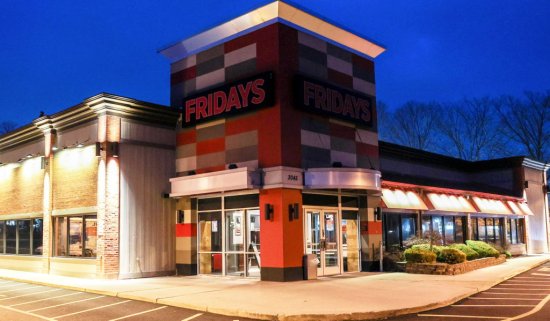
Full-service chains like Red Lobster, TGI Fridays and others are having a hard time in current economic conditions
Red Lobster filed for bankruptcy in May. TGI Fridays closed nearly 50 locations abruptly in October, then filed for bankruptcy in early November. Hooters shut down dozens of stores in June, while Buca di Beppo declared bankruptcy in August. Even budget standby Denny’s said in October that it would close about 150 stores in the next two years, citing “choppy economic conditions” and the fast pace of inflation for food away from home.
Sit-down chain restaurants may be the quintessential American business, beginning with the expansion of Howard Johnson’s after World War II as families got in the car and started to travel. But the economy is challenging the business model. Although inflation is slowing, cost-conscious consumers are eating more at home or at lower-cost fast-food restaurants, where the average check is $7.92, about half the average check at a sit-down restaurant, according to CREST, a database from consumer insight firm Circana. Many sit-down (or full service) chain restaurants came into this economic climate deep in debt, and are now struggling to stay afloat.
[time-brightcove not-tgx=”true”]“A whole lot of these companies are finding their sales aren’t turning out to be as strong as expected,” says Jim Sanderson, a restaurant industry analyst for Northcoast Research. Customer traffic at full-service restaurants in the third quarter of 2024 was down 3% from a year ago and is 17% below the same period in 2019, according to CREST.
Read More: How the Economy Is Doing in Swing States.
Part of the problem is labor costs are continuing to grow but inflation-weary consumers aren’t willing to pay more for restaurant food, says Sanderson. Nearly all restaurant owners surveyed by the National Restaurant Association this year said higher labor costs were “an issue” for their business. Restaurants used to spend 30-35% of gross sales on labor. Now many spend 40% to 45%, according to Dave Foss, co-founder of hospitality group Maverick Theory.
Another issue is that many of these restaurants are now owned by private-equity groups that borrowed a lot of money for their acquisitions and are not seeing the cash flow they needed to come out even. TGI Fridays, Red Lobster, Hooters of America, and P.F. Chang’s were all purchased by private-equity groups in the last decade. TGI Fridays has 58% fewer restaurants than it did in 2019, and Hooters had 23% fewer, according to data from industry research firm Technomic.
“If you combine restaurant margins being under pressure with a tenuous financial situation, all you need is one or two things to go wrong,” says Sara Senatore, senior analyst covering restaurants at Bank of America. Chain restaurants used to be pretty stable businesses, so private equity owners had a good idea of what costs and sales would be, she says, but the pandemic made the business much more volatile.
Some restaurants are trying to earn back business by offering huge discounts on meals or all-you-can-eat specials, which just cuts into their bottom line even more, says Dan Rowe, CEO and founder of Fransmart, a franchise-development group. “It’s not sustainable,” he says. Red Lobster famously offered an all-you-can-eat shrimp detail before it filed for bankruptcy.
Read More: What a $129 Frying Pan Says About America’s Eating Habits.
There is one success story, analysts say: Chili’s, owned by the public company Brinker International, which got a new CEO in 2022. The company changed its menu, removing many items and focusing on a few staples, including burgers, fajitas, and margaritas. It got much better at social media and advertising so that when customers came into the restaurant, they were pleasantly surprised at the new and improved menu. The company also launched a “barbell” strategy in which it offered big deals to lure in customers and premium products to get them to spend money. Chili’s also reinvested in labor, making sure restaurants were fully staffed so that guests wouldn’t face long wait times. In the most recent quarter, Chili’s sales grew 14%.
“We’re starting to see a few glimmers of hope,” Sanderson says, “with some restaurants finding there is a way to re-engage customers.”